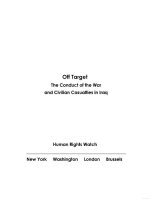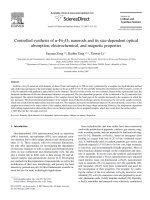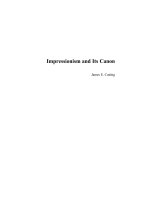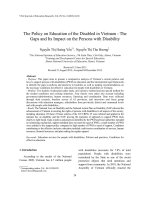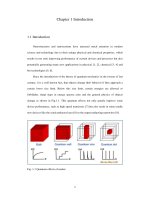30 5 The End of the War and its Legacy
Bạn đang xem bản rút gọn của tài liệu. Xem và tải ngay bản đầy đủ của tài liệu tại đây (830.39 KB, 15 trang )
30-5: The End of the War
and its Legacy
1. Nixon adopts a policy of
Vietnamization
To end U.S. involvement in Vietnam
To replace U.S. troops with South
Vietnamese troops – to establish
“peace with honor”
On Back: Nixon appeals to the
“Silent Majority” to support
Vietnamization (those Americans
who Nixon believed silently
supported his policies in Vietnam)
2. My Lai
massacre shocks
Americans
100 innocent
Vietnamese
murdered by
U.S. soldiers
– This event
further turns
Americans
away from
the war
3. Nixon orders invasion
of Cambodia
Purpose: To remove Vietnamese
and Vietcong supply centers from
Cambodia (Many Americans see
this act as an escalation of the war
and are angry)
4. First Student Strike in
U.S. History Occurs
Purpose: To protest the invasion of
Cambodia
5. Congress repeals the
Tonkin Gulf Resolution
Purpose: To protest Nixon’s
bombing and invasion of Cambodia
without first notifying Congress –
This act is an attempt by Congress
to gain greater control over U.S.
policy in Vietnam.
6. The “Christmas
bombings” take place
Purpose: To. Force a negotiated
peace settlement
Massive 11 day air campaign in
December of 1972 that Nixon
unleashed in an attempt to make
North and South Vietnam sit
down at the bargaining table and
begin negotiating an end to the
war in Vietnam
7. South Vietnam surrenders
to North Vietnam
North Vietnam’s
full scale invasion
of South Vietnam
and the capture
of Saigon leads to
the South’s
surrender
No U.S. troops
were there to
prevent the
North’s victory
8. Vietnam veterans receive a
cold homecoming
At the time, Americans were very
torn and bitter about the war and
did not honor our returning
soldiers as they should have been
In more recent years,
Americans have tried to
make up for our ill
treatment of our
Vietnam Veterans
9. Cambodia erupts in
Civil War
After the U.S.
invasion of Cambodia
(On Back) the Khmer
Rouge- a Communist
group takes over
Cambodia and purges
all intellectuals
Khmer Rouge with a prisoner
10. Congress passes
the War Powers Act
To curb the
President’s war
making power
Presidents must
notify congress
within 48 hours of
committing troops to
a foreign nation
No troops can remain
in a foreign nations
after 90 days without
approval by
Congress.
This act = attempt by
congress to keep
presidents from
having full reign to
conduct a war again.
11. The draft is abolished
The draft had become
very unpopular
12. Many Americans lose
faith in their government
The publication of the Pentagon Papers
On Back: (Government documents that
showed the govt. had no exit plan for
Vietnam) reveals Johnson’s
Administration was lying about the war
My Lai Massacre leads some Americans
to view the U.S. military as “baby killers”
Campus turmoil (Kent State killings)
Nixon’s administration is found corrupt
and that the president lied about the war
during the Watergate Scandal
12. Many Americans lose
faith in their government
The publication of the Pentagon Papers On
Back: (Government documents that showed
the govt. had no exit plan for Vietnam)
reveals Johnson’s Administration was lying
about the war
My Lai Massacre leads some Americans to
view the U.S. military as “baby killers”
Campus turmoil (Kent State killings)
Nixon’s administration is found corrupt and
that the president lied about the war during
the Watergate Scandal
Henry Kissinger
Nixon
advisor
who helped
negotiate
and end to
the war.

